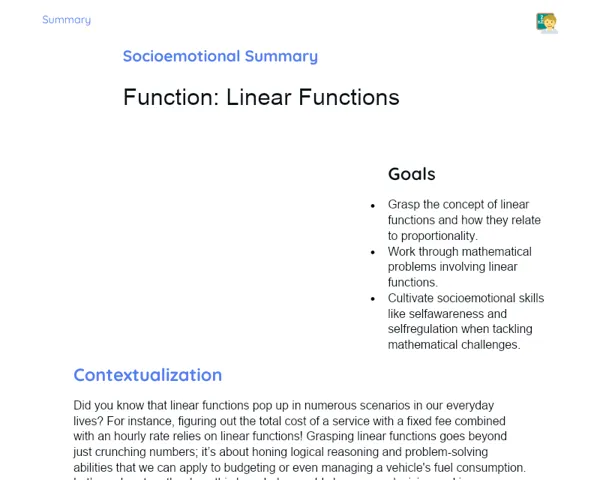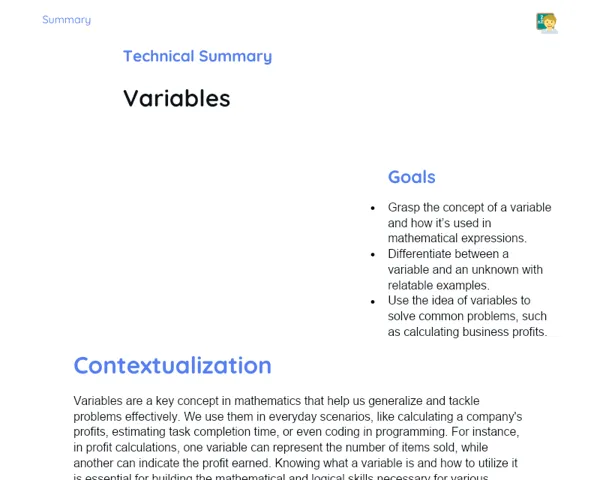Objectives
1. Understand the concept of angle bisectors and perpendicular bisectors and their role as fundamental geometric loci.
2. Identify and accurately draw angle bisectors and perpendicular bisectors in geometric figures, applying this knowledge to practical scenarios and everyday challenges.
3. Enhance critical and analytical thinking skills through the manipulation of these concepts in both real and abstract contexts.
Contextualization
Did you know that angle bisectors and perpendicular bisectors aren't just theoretical concepts in geometry? They serve vital functions across various fields, including architecture and interior design. For example, when an interior designer arranges a lounge, they might use perpendicular bisectors to ensure that a couch is equally distanced from two windows, creating a balanced and inviting space. These concepts help to solve mathematical problems and have practical outcomes that enhance the look and functionality of our surroundings!
Important Topics
Angle Bisector
An angle bisector is a line or plane that divides an angle into two equal angles. This idea goes beyond mere angles and can apply to any line segment or plane that splits a figure or space into two equal parts. For instance, in a triangle, the angle bisector of an interior angle divides the opposite side into segments that are proportional to the lengths of the other two sides.
-
The angle bisector is a key geometric locus, useful for visualising symmetries and equal distances.
-
It is essential for solving construction and design challenges that involve symmetrical arrangements.
-
Grasping angle bisectors contributes to developing spatial awareness and tackling more complex geometric issues.
Perpendicular Bisector
A perpendicular bisector is a line that intersects a line segment at a right angle and goes through its midpoint. Not only does it divide the segment into two equal parts, but it also establishes symmetry around the segment, which is beneficial in various design and construction contexts. For example, when building a bridge, using a perpendicular bisector for a support ensures that the load is distributed evenly.
-
The perpendicular bisector is crucial for finding geometric centres, such as the circumcentre of a triangle.
-
This concept is applied in projects that demand symmetry, whether in landscaping or furniture layout.
-
Understanding perpendicular bisectors is key for addressing analytical and practical geometry problems.
Practical Applications
The principles of angle bisectors and perpendicular bisectors extend beyond theory; they have significant practical applications. In engineering, they are crucial for designing symmetrical structures and ensuring even load distribution. In architecture, they contribute to creating aesthetically pleasing and functionally efficient spaces. When it comes to interior design, they play a pivotal role in arranging furniture and crafting harmonious layouts.
-
In civil engineering, employing angle bisectors and perpendicular bisectors is vital for the stability of bridges and buildings.
-
In product design, they aid in creating symmetrical, ergonomically friendly items.
-
In urban planning, these concepts help shape public spaces that are both functional and visually appealing.
Key Terms
-
Angle Bisector: A line that divides an angle into two equal angles.
-
Perpendicular Bisector: A line that is perpendicular to a line segment and crosses through its midpoint.
-
Geometric Locus: A set of points that meet one or more geometric criteria, such as being equidistant from two points.
For Reflection
-
How might angle bisectors and perpendicular bisectors influence the design of your own home? Can you think of specific examples?
-
What makes symmetry so valued across different cultures worldwide? How do the concepts of angle bisector and perpendicular bisector add to this appreciation?
-
In what ways can studying angle bisectors and perpendicular bisectors benefit careers that interest you or are seen as forward-thinking?
Important Conclusions
-
Today, we delved into the captivating world of angle bisectors and perpendicular bisectors, uncovering how these concepts are not merely lines or planes but crucial for maintaining symmetry and equal distance in numerous practical applications, from engineering to interior design.
-
We learned that angle bisectors divide angles into equal parts, while perpendicular bisectors ensure segments are positioned equidistantly and symmetrically—a necessity in many professional fields and daily life.
-
These concepts are not just academic; they have tangible implications that influence the aesthetics and functionality of the spaces and structures that we interact with daily.
To Exercise Knowledge
- Geometric Treasure Map: Craft a treasure map at home or in a local park using angle bisectors and perpendicular bisectors to navigate towards the treasure. 2. Room Design: Reorganise your room considering perpendicular bisectors to symmetrically position your bed in relation to the window. 3. Building Challenge: Using recyclable materials, construct a model that showcases angle bisectors and perpendicular bisectors for maintaining balance and symmetry.
Challenge
🚀 Perfect Park Challenge: Imagine you are an urban planner designing a small public park. Use angle bisectors and perpendicular bisectors to strategically place benches, trees, and pathways to promote symmetry and equidistance. Present your design with a brief explanation of how these principles enhance the park's layout.
Study Tips
-
Leverage digital drawing tools like CAD software or drawing apps to practice creating angle bisectors and perpendicular bisectors interactively.
-
Explore local parks or urban areas and observe how angle bisectors and perpendicular bisectors have been implemented in the design.
-
Share these concepts with a friend or family member. Teaching these concepts is a great way to reinforce your own learning while sparking insightful discussions.



